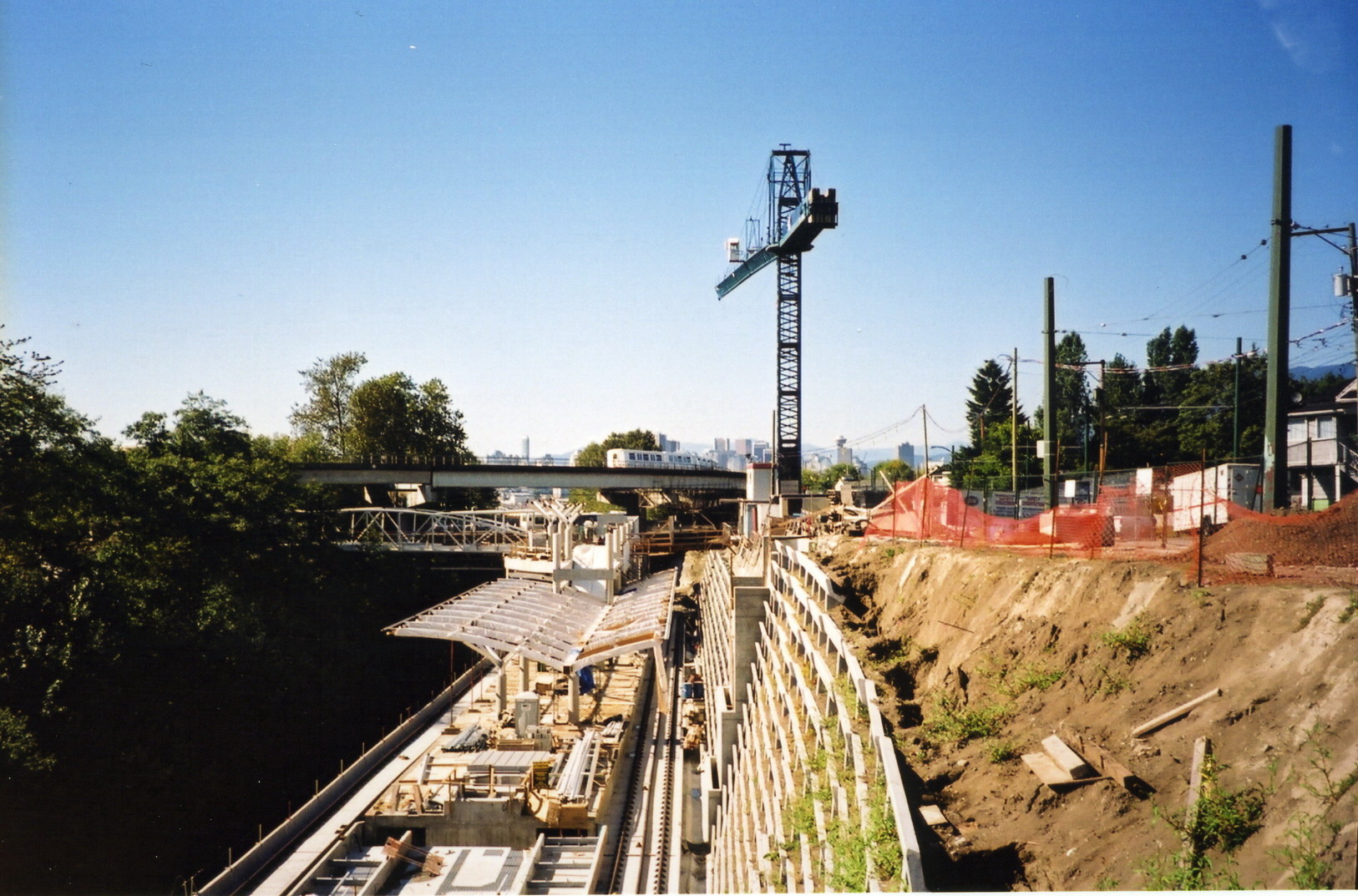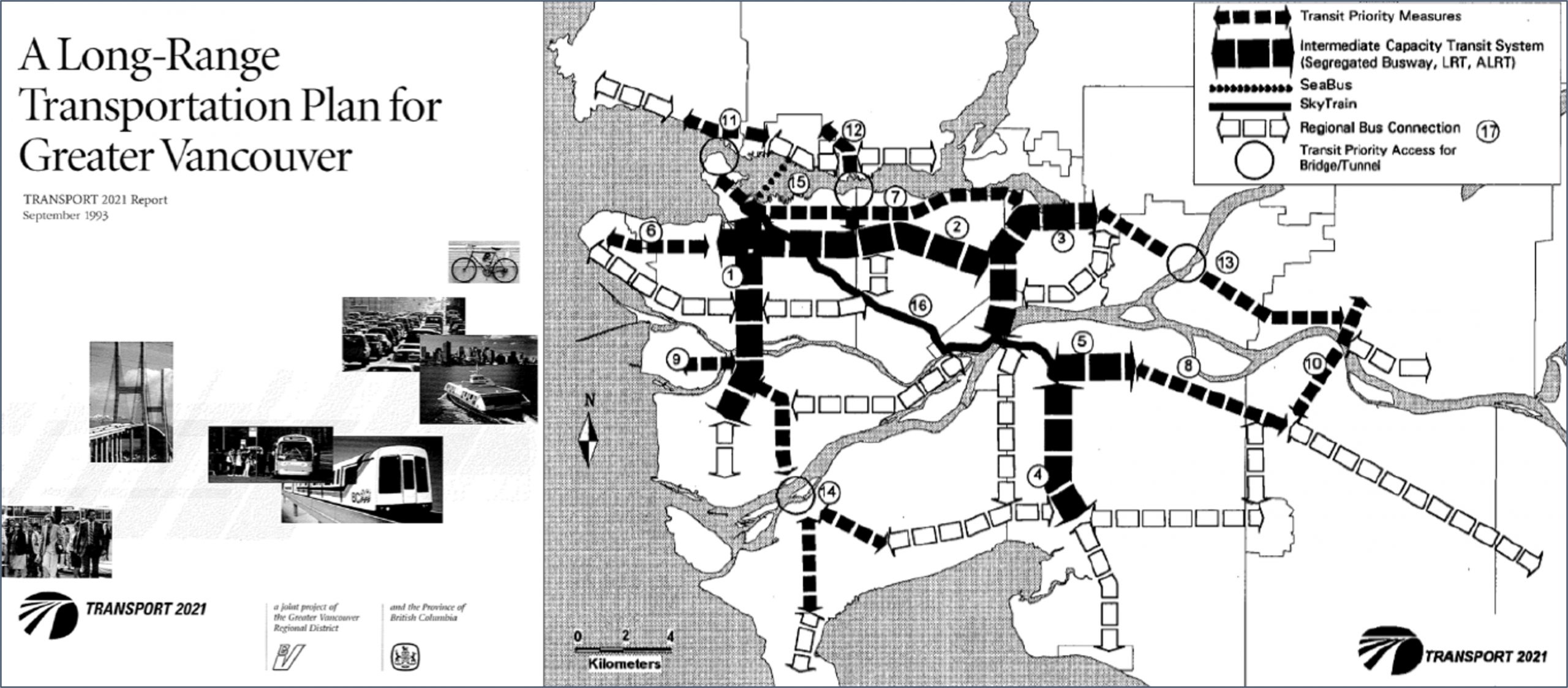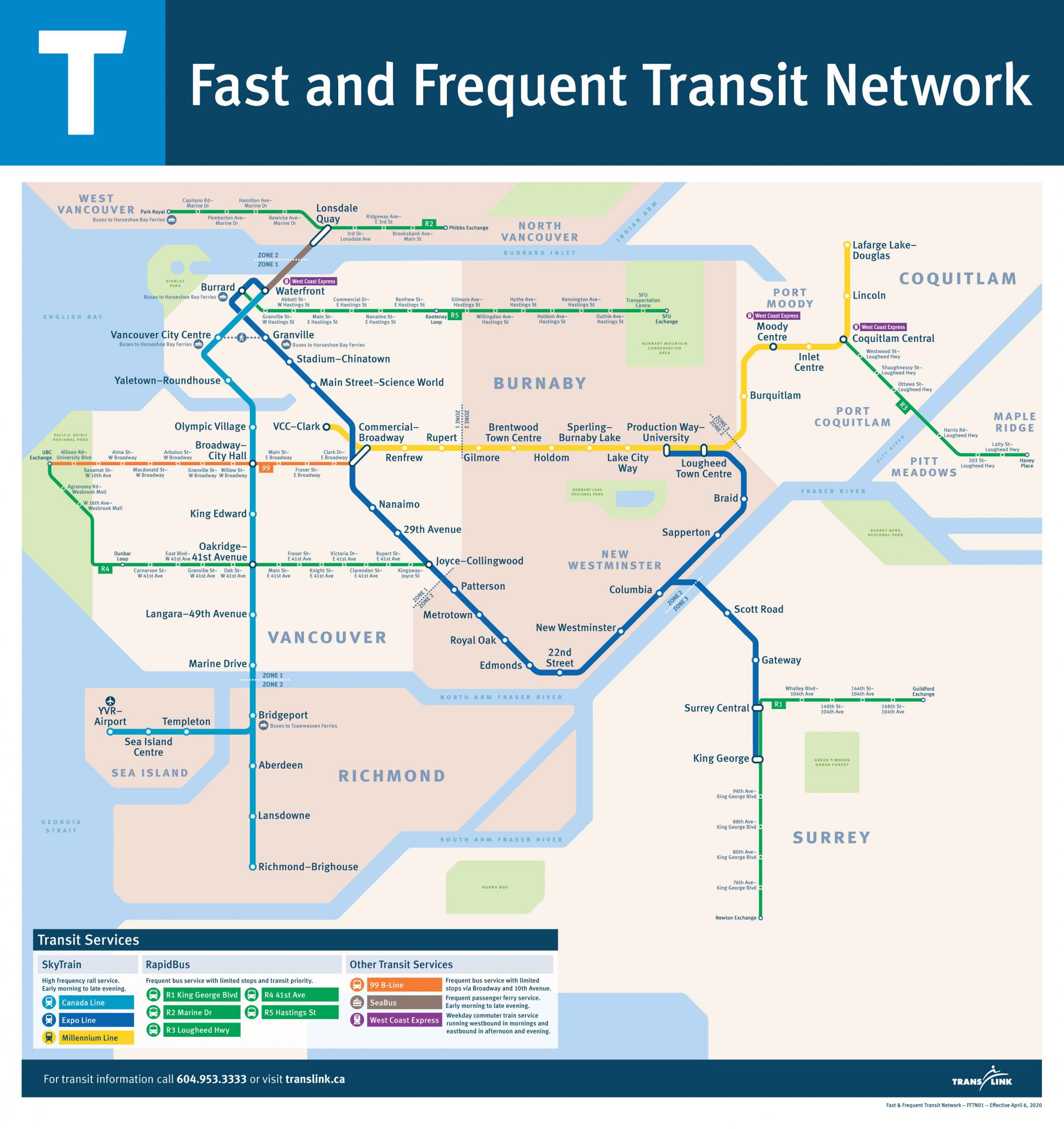How Transport 2021 transformed the region and Transport 2050 will too
How Transport 2021 transformed the region and Transport 2050 will too

It’s 1993.
Whitney Houston’s “I Will Always Love You” spent nine weeks atop Billboard’s Hot 100. The film Jurassic Park grossed nearly $1 billion dollars in the box office worldwide, snatching the crown as the highest-grossing film ever (at the time). The Montreal Canadiens won the Stanley Cup — to this day, they’re still the last Canadian team to accomplish this feat.
And Transport 2021 was adopted.
Now, you’re probably thinking one of those things does not belong.
I’m here to tell you — Transport 2021 belongs as a 1993 newsmaker for our region. We just didn’t realize it at the time.
We’re near the finish line
Because once we complete the final phase of the 10-Year Vision, Metro Vancouver’s transportation expansion plan, we will have built out nearly the entire road and transit system that was envisioned three decades ago in Transport 2021. And today, transit in Metro Vancouver reaches 90 per cent of places where people live and work.
The planning for transit expansion that we enjoy today began with Transport 2021 in 1993. The priority for the Millennium Line — and the Broadway Subway, Surrey Langley SkyTrain and Evergreen extensions — Canada Line and the RapidBus network were all laid out in this plan.
Transport 2021 also laid out three priorities: build town centres connected by transit, create walking- and cycling-oriented communities, as well as adding greenspace.
The transportation priorities as laid out in Transport 2021

Metro Vancouver’s fast and frequent transit network today

With Transport 2021 nearly fully built out, it’s now time to go back to the drawing board to develop Transport 2050. A new regional transportation strategy that will serve as a blueprint for the region, setting the visions, goals, strategies and key initiatives for Metro Vancouver for the next 30 years — just like how Transport 2021 did.
Our current plan has set us on a good path, but we need to be nimble and able to adapt to new realities.
The new realities
As we globally seek to dramatically reduce our carbon emissions world amidst global warming, we’re electrifying. In fact, we’re well on our way at TransLink with four battery-electric buses already in service on the 100 22nd St Station/Marpole Loop route with 15 more buses on order. Our goal is to transition our fleet to operating entirely on renewable energy by 2050.
We’re adopting new technologies at a rapid pace. A decade ago it might still have been science fiction, but autonomous vehicles are here. Tech companies like Tesla, Google, Apple and Uber, as well has automobile manufacturers are all testing them. One company is already testing in Las Vegas on public roads without safety drivers behind the steering wheel, while Volvo and a start-up are working on fully autonomous semi trucks.
And what’s the future of mobility? Many of us are already sharing rides using ridehailing services like Uber and Lyft, as well as carsharing services like Evo and Modo. How will these services change with the arrival of autonomous vehicles? How does micromobility like electric scooters and dockless bike shares fit within our transportation network?
Metro Vancouver’s population is growing too. The latest projections have the region growing to about 3.8 million people by 2050. As the population grows, so too does demand on our transportation network.
How do all these new realities fit in with Metro Vancouver’s transportation network? How will we get around in the future and how will we live? That’s a taste of what we’re trying to tackle with our Transport 2050 public engagement.
Expanding and improving the transit network
Between May 3 to September 22, 2019, TransLink embarked on its largest public engagement ever. We asked the region to share its priorities, concerns, values, and ideas. You responded in a big way. We reached 159,000 people and received a record-breaking 31,682 responses through its survey. Respondents also submitted over 4,000 ideas for the future of transportation.
What we heard was expanding and improving the transit network is a priority for you, regardless of whether you’re a driver, walker, cyclist or a transit user.
Our planners have been hard at work turning these ideas into new transportation projects, services and policies. Just like in 1993, we’re at a juncture in the road. We have the opportunity to chart the direction the region is headed and we need your help.
Visit transport2050.ca to learn how you can help influence the region’s transportation network over the next 30 years.





